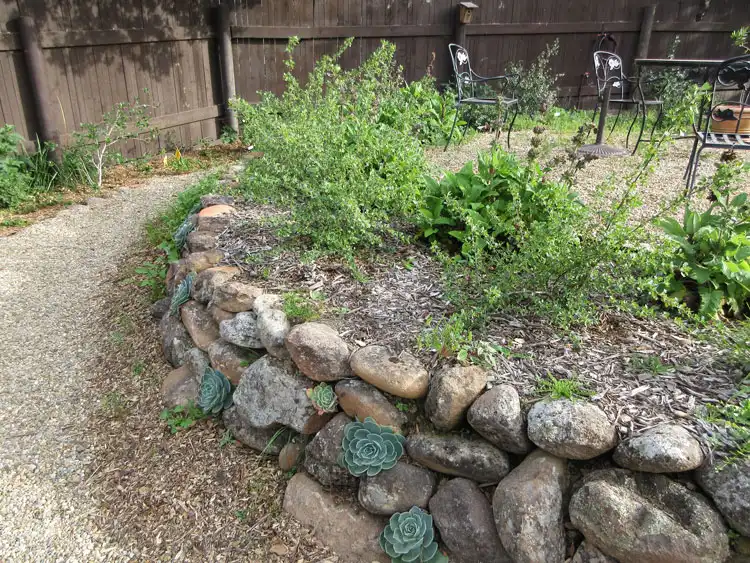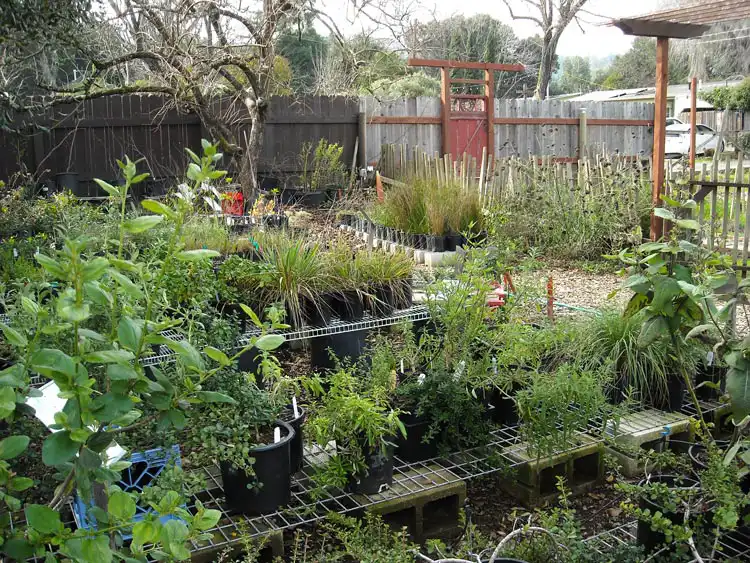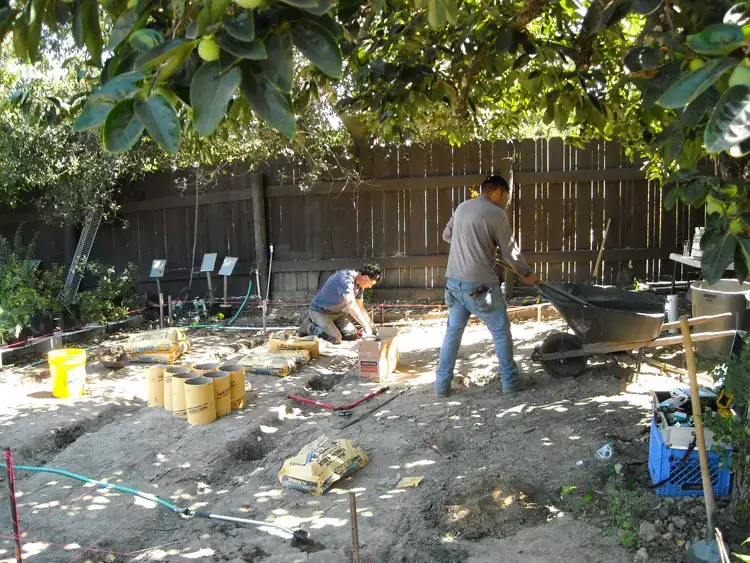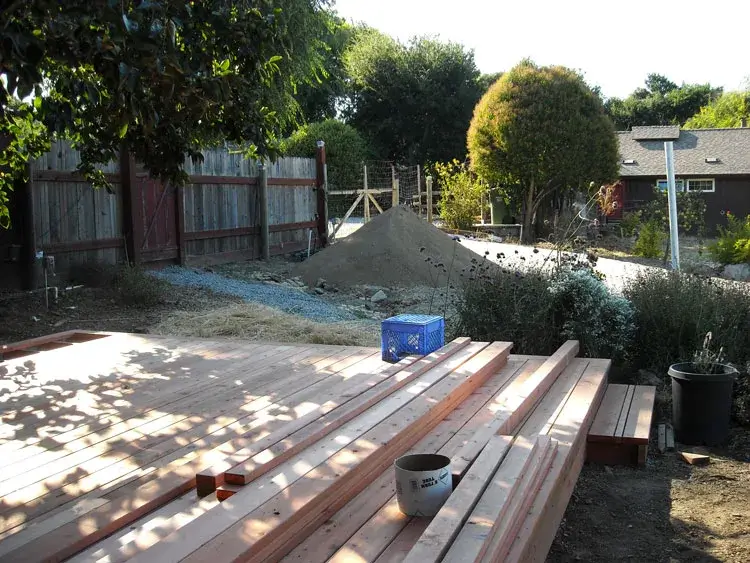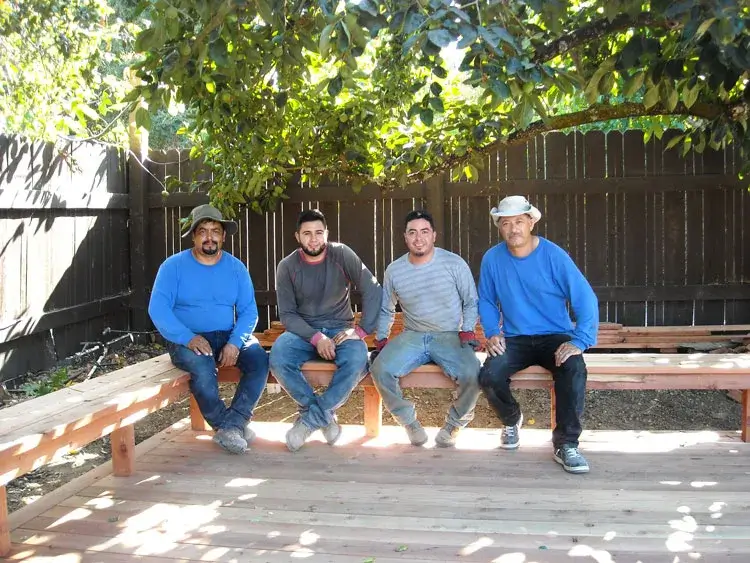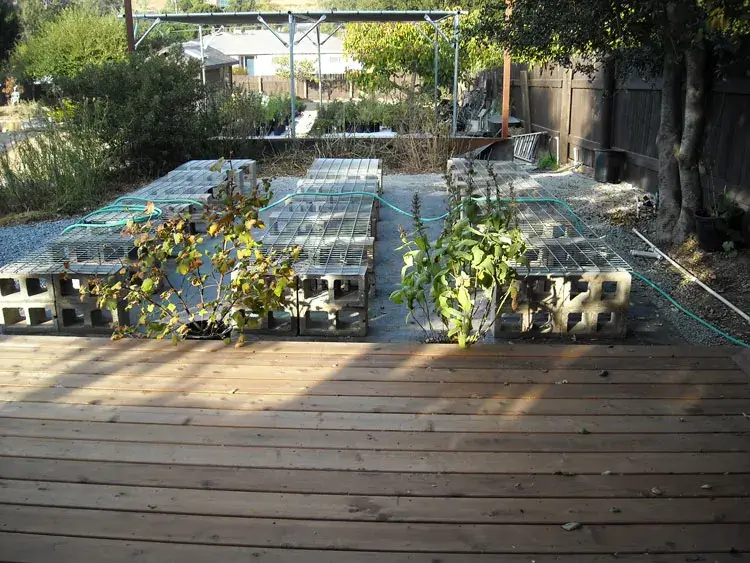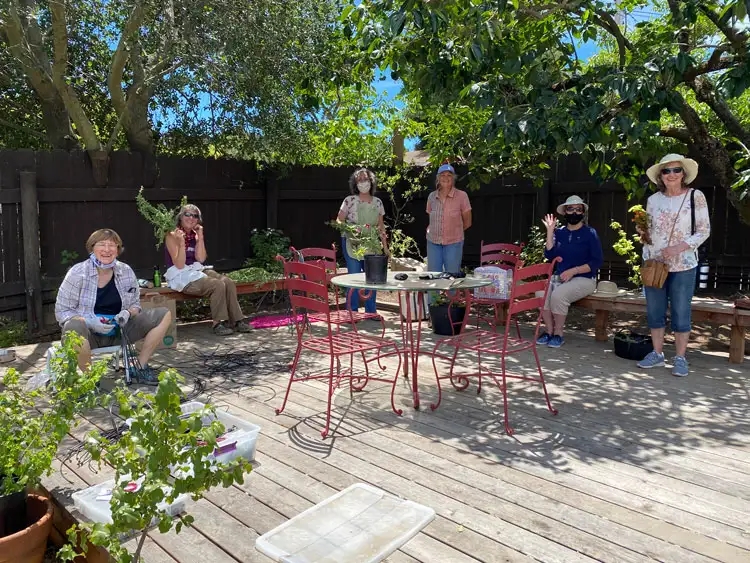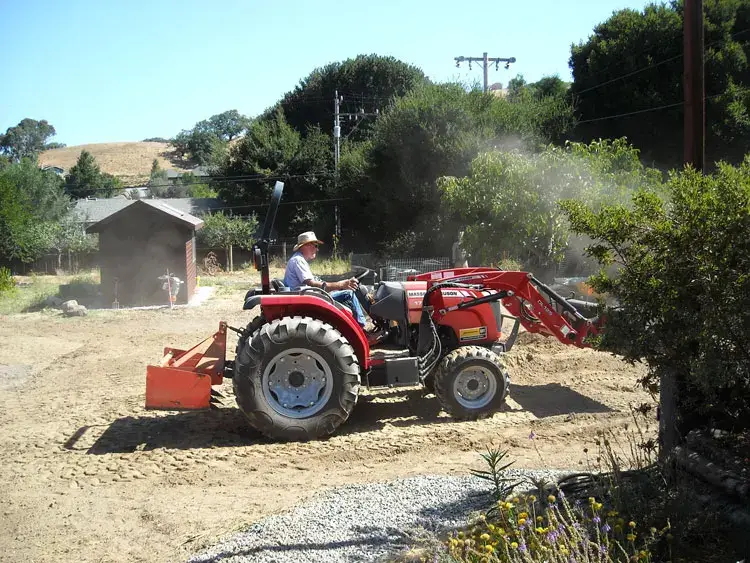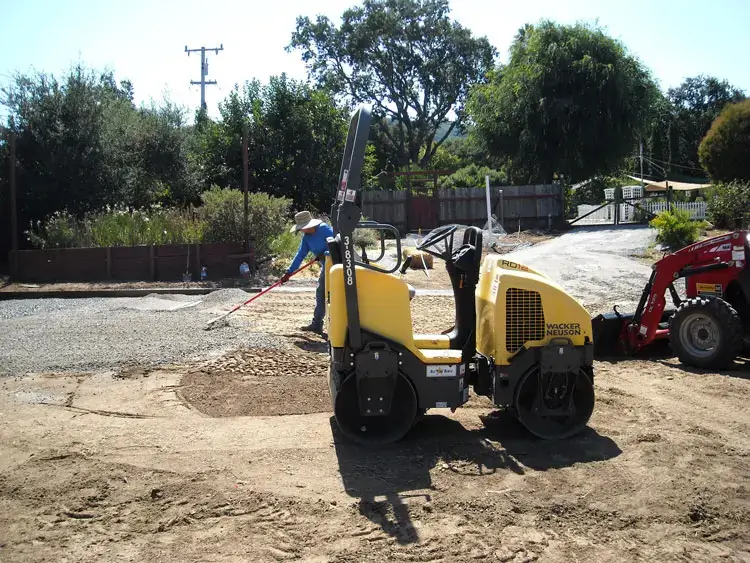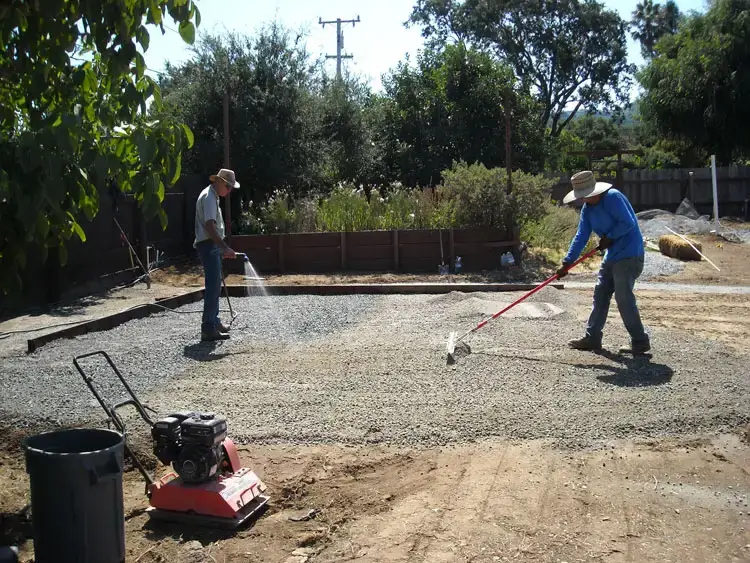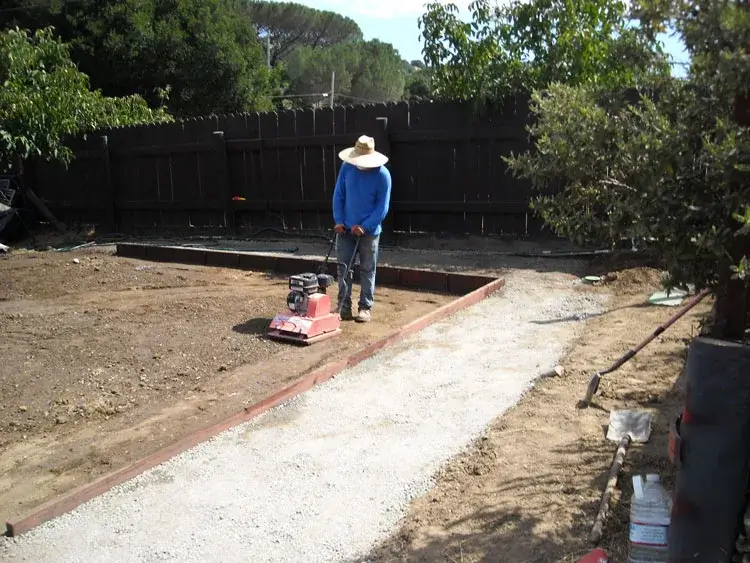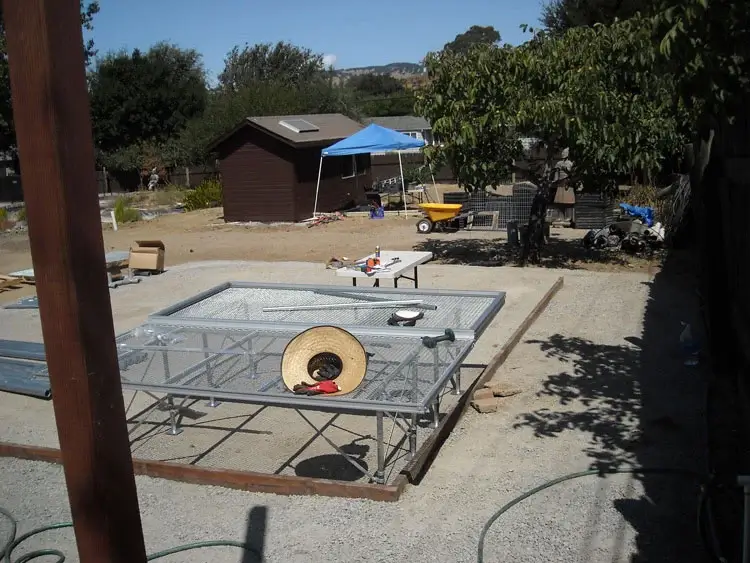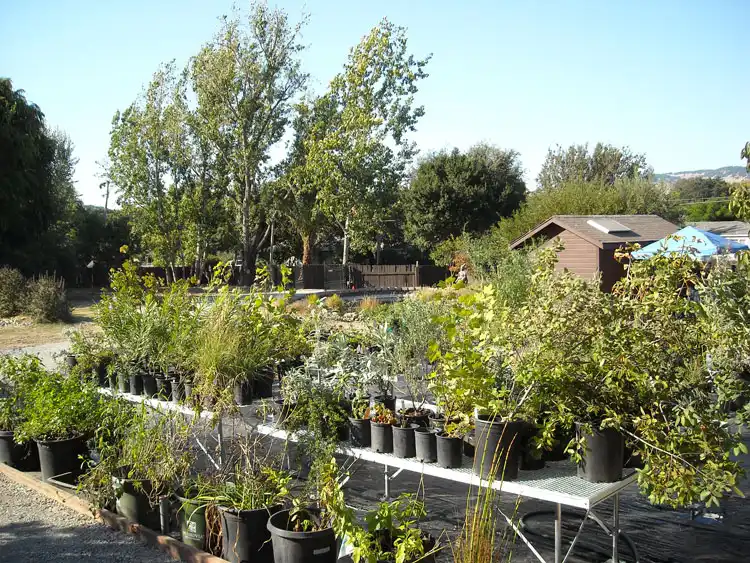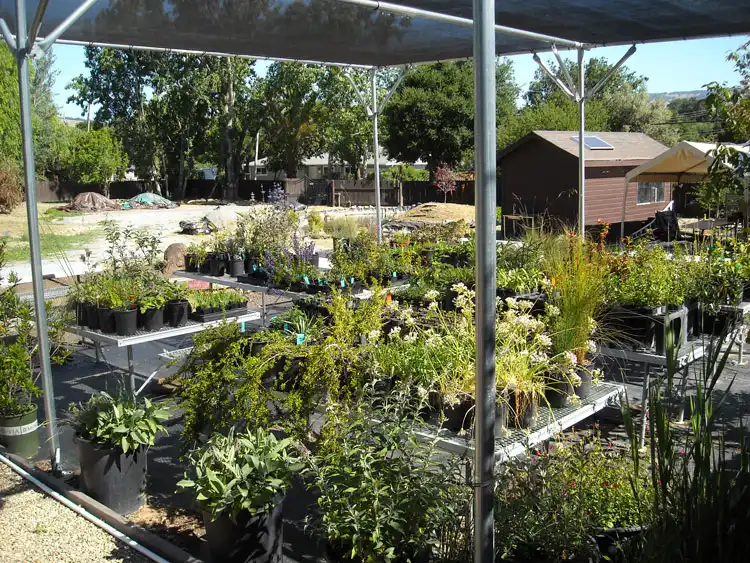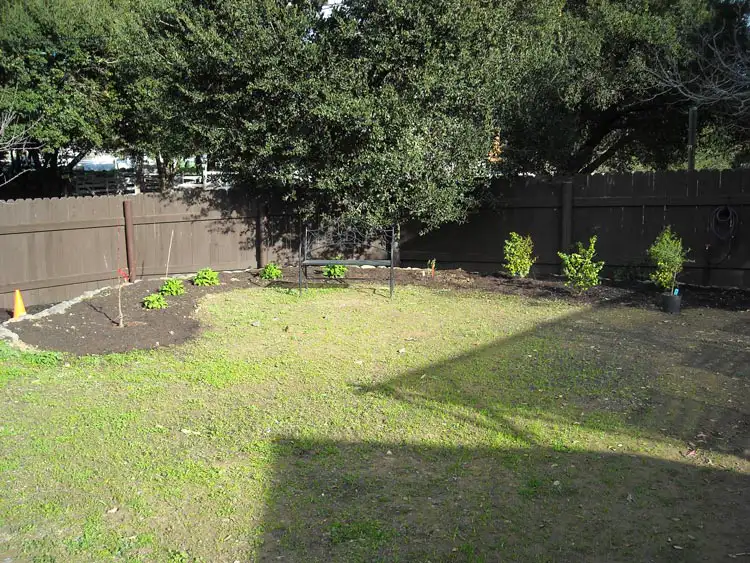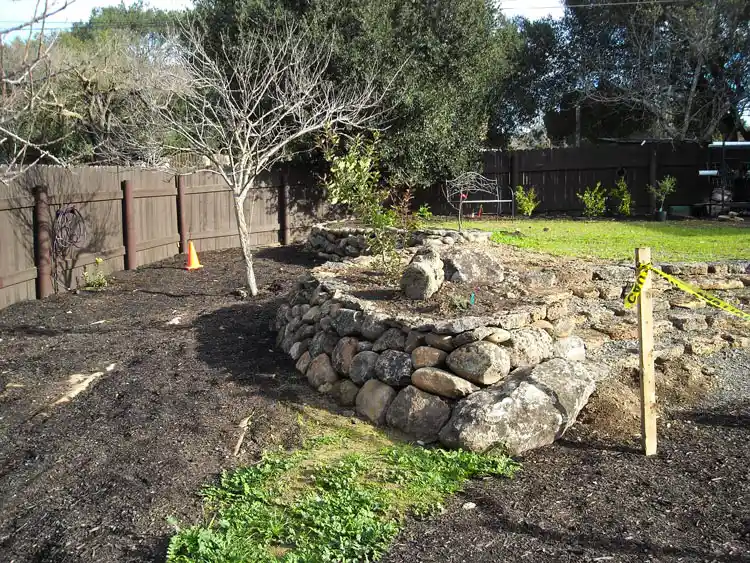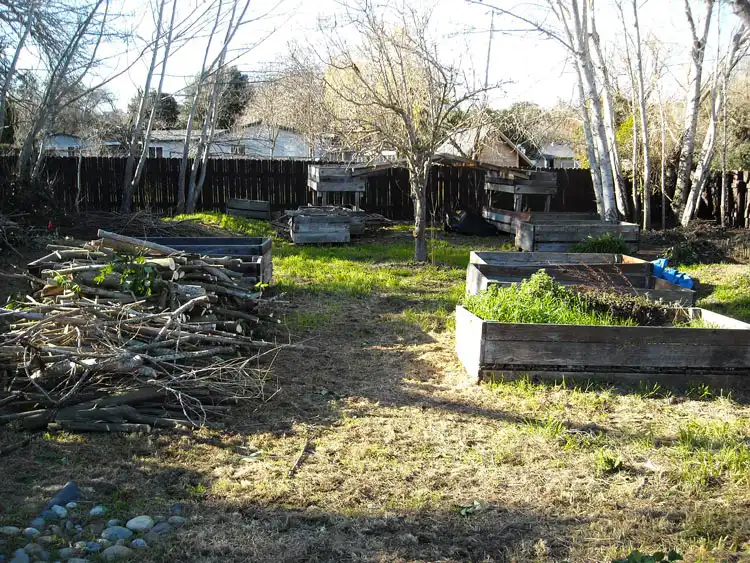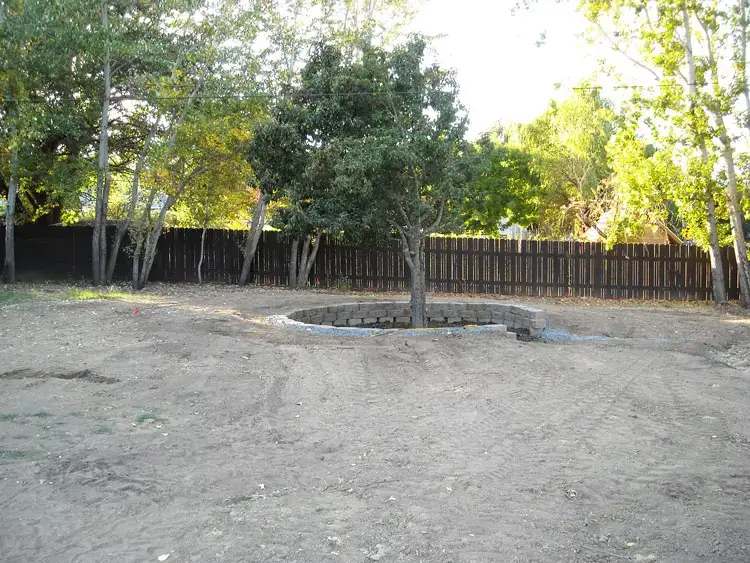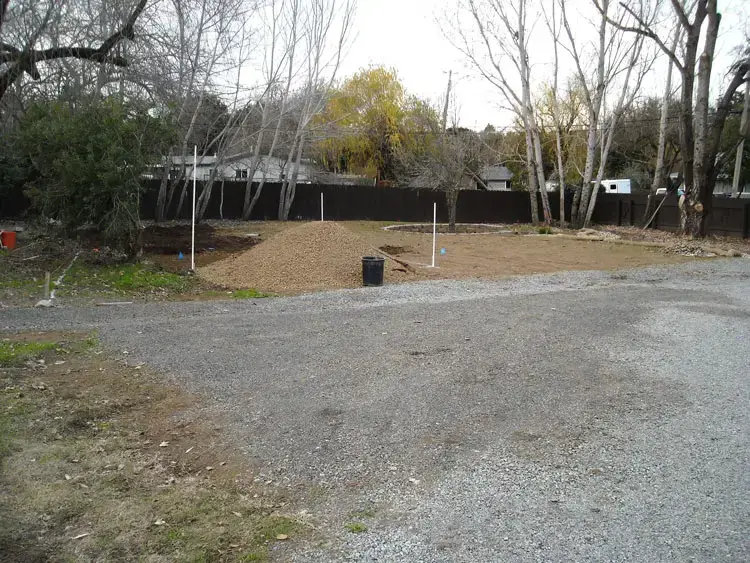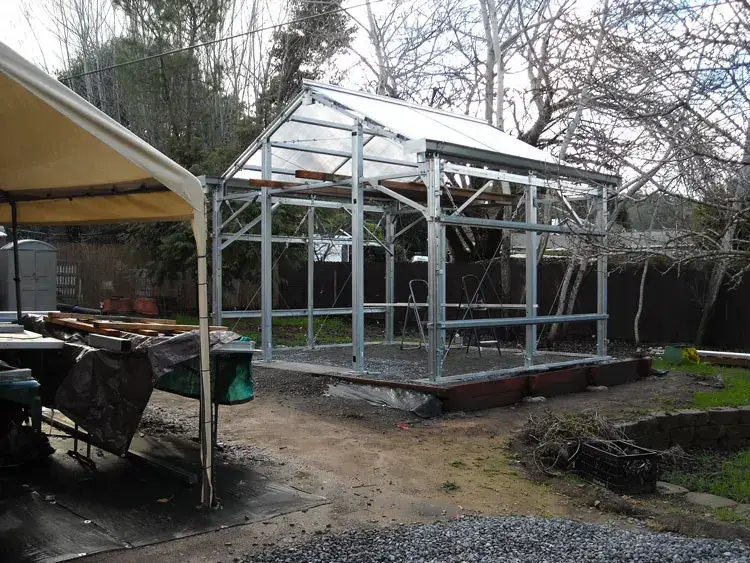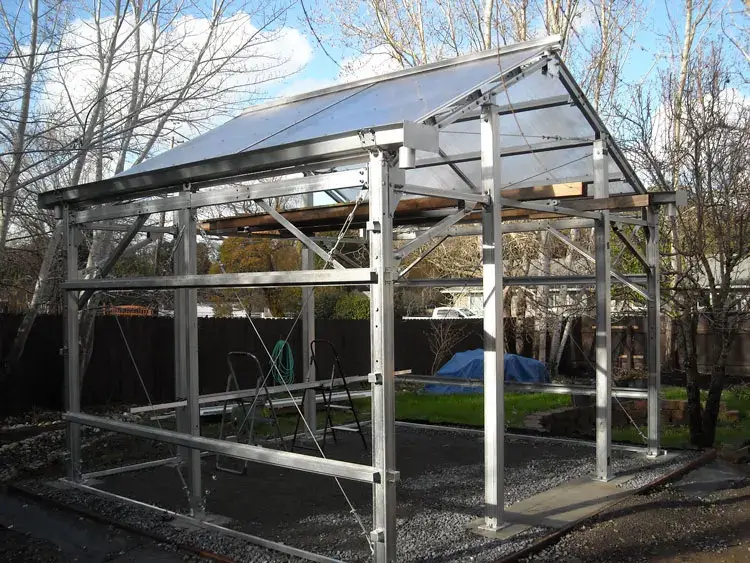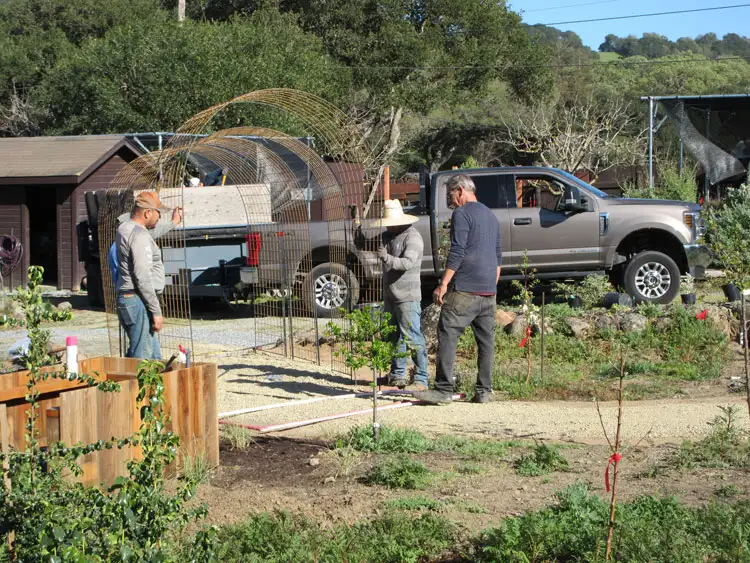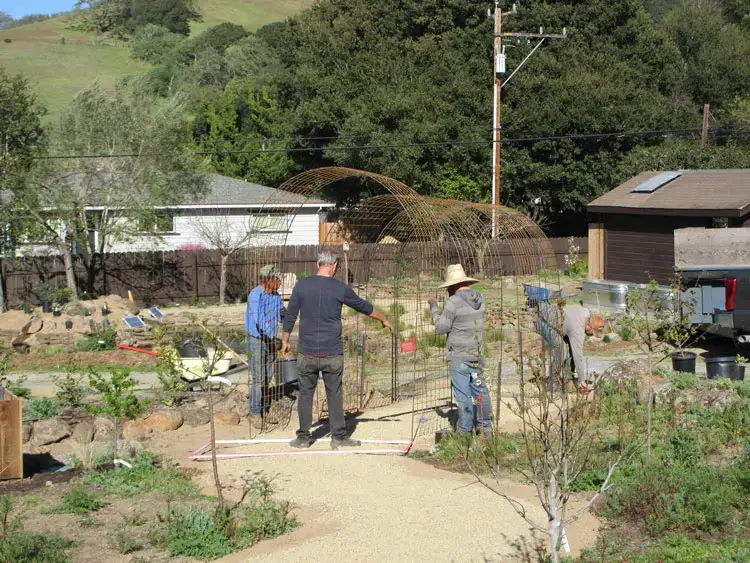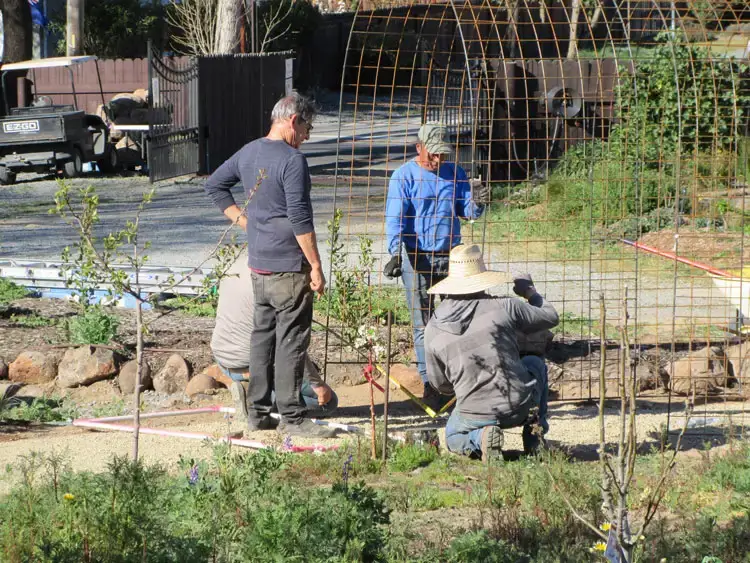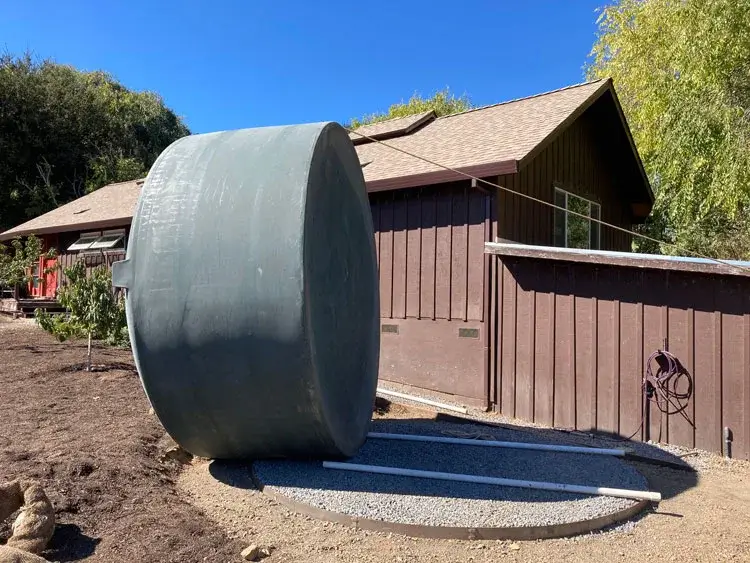Redwood Deck Gathering Area
One of our first ‘build-outs’ was designed to reclaim the area under a large Fuyu persimmon tree where the drainage was very bad. We installed several French drains, all leading to bog edge of the pond. We had also determined that this area under the deciduous persimmon was not a good place to grow on nursery plants due to the animal activities during the fruitful season and heavy leaf fall!
Now we have a wonderful gathering area for classes and other educational activities, as well as a nice, shady place for our volunteers and workers to sit and eat lunch!
Shade Houses
Shade houses are valuable as a protected area for plants in nursery pots to grow on. Each of our two-shade houses covers six 4 x 8 ft. metal nursery benches, creating almost 200 square feet of ‘grow space’ in each shade house.
We purchased ‘kits’ – for both the shade houses and benches. The nursery benches are an open-weave metal, and about 3 ft. high; which is all about maintaining the best nursery management practices, and growing on our plants in the very best of conditions.
Erecting a shade house takes a lot of site preparation ahead of time. The ground has to be leveled and compacted, then covered with a ground fabric, and only then can the benches be set up.
Dry-Stacked Walls
In each garden area that we create at Home Ground – providing habitat is always foremost on our minds. Therefore all the walls in our gardens are ‘dry-stacked‘; meaning rocks and boulders are not mortared in. Walls like this create valuable hiding and over-wintering places for insects, amphibians, and reptiles.
Dry-stacked rock walls also offer places to ‘plug in’ succulents and for wildflowers and other plants to happily – and beautifully – seed themselves in!
When we select large rocks or boulders we always look for ones with natural depressions that will hold small pools of water; nice patches of mosses and lichens are also a big plus! We use mostly stones which are basalt in origin; this is a common local stone.
Greenhouse
The professional greenhouse (12 by 14 ft.) was also purchased as a kit, and it took two skillful men about a month to install it. We have no need to heat the greenhouse, but it is ventilated, and in the summer we actually need to whitewash it to cool it down a bit!
We have 56 square feet of bench space in the greenhouse and special misting systems that allow us to root cuttings, start selected species by seed, and to grow on delicate young seedlings.
Garden Arbors
An arbor creates a special entryway into a different part of the garden; it frames a vista, and helps create a focused view of a different section of a garden. A ’tunnel arbor ‘can really emphasize the experience of going someplace very special.
Our tunnel arbor was built with five separate 3 1/2 ft wide arbors arranged over a curving path leading into our small fruit orchard. Curving pathways, hidden vistas and garden areas that are really only viewable when you actually walk the path to get to them, help create a garden of intrigues and wonder.
Any number of vining plants can be supported on arbors; from beans and cucumbers to clematis and morning glories. We chose Passion Vine for one section on the tunnel arbor. The vines were planted in late April 2022, and by October had fully covered about 10 ft; a very fast-growing tropical vine!
Water Storage Tank
This is a really important backup source of water for our pond and gardens during the really dry season. Most of the year we have enough water from an old 20 ft. well, and we do also have a connection for ‘city water’ for emergencies.
But a storage tank that can capture 5,500 gallons of water from the barn roof during the rainy season is a great backup!

